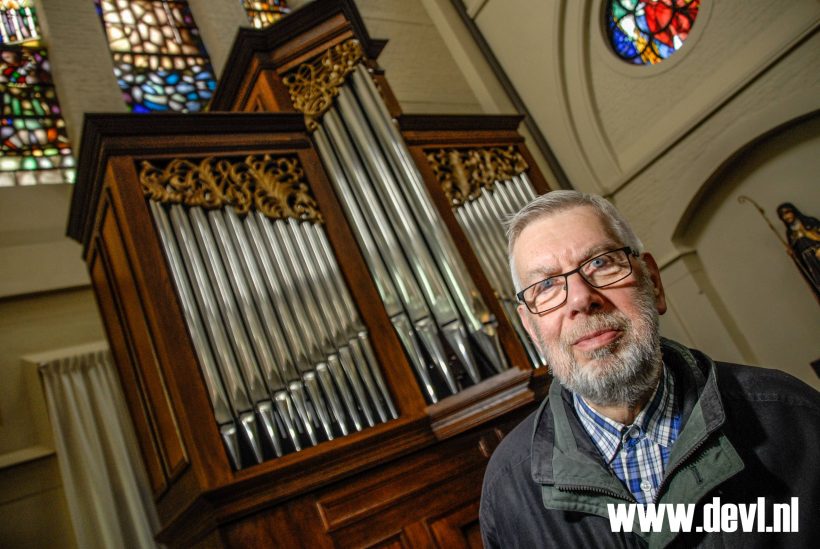From a small boy impressed by organ music, to organist, to organ builder. Many things can happen, and they did for Loek van Nes (73). As the organist in the church of Divine Providence in Bergen op Zoom, Van Nes had to make do with a “fake organ”. Dozens of times he pleaded the priest to buy him a real organ. It never happened. So, Van Nes decided to build one himself. That was 1967. Only eightteen years later, he finished his first organ.
That timespan speak volumes about the complexity of building an organ. Many years and many projects later, his own naivety makes Van Nes laugh. “Beside the metal pipes, I made everything myself. Sometimes I threw something in the fireplace and started over. I wanted to do it right. And although it took me a very long time, building my first organ also brought me to appreciate a new, relaxing hobby. It still is that. Building organs is my hobby, not m y profession. I’m an amateur, not a professional.” Amateur or professional? It’s an intersting question, answered best probably by the fact that the organ he built for that church in Bergen op Zoom was later placed in the Heikelse Kerk in Tilburg, where it was used by students of the Tilburg Conservatory. “That organ was my masterpiece, I think”, Van Nes says, “it consisted of 3331 pipes and sounded marvellous.”

The organ in the church in the small town of Ossendrecht had been in bad shape for years. The parish was advised to look for a secondhand organ, but placing it in the church would have been a true disaster. Like a gift from heaven, Loek van Nes appeared on the rader. He showed himself willing – on a voluntary basis – to build an organ fort he parish. He set to work around Easter in 2012. He took the pipes that were still usable from the old organ and started building the new one. In his workshop at home Van Nes worked patiently and for many years, finishing the organ. He finds it difficult to put into words the complexity of building an organ: “When the organist touches a key, through a system of levers, he opens a valve somewhere in the organs windchest. Through that, the wind disappears, and creates a tone”, he explains. When he says the organ he built has two keyboards and 750 pipes varying in diameter from 6 millimetres to 23 centimetres, it becomes easier to form a picture of the size of the job Van Nes did. “Throughout the years many different, more efficient systems have been developed, but the old, mechanical, crafted organ is still the best. It produces a better sound, and offers a form of finesse tot he organist. As it were, he can actually feel the wind through his keys”, he says, “as soon as I start a build, I have the sound I expect from the organ in my head. When this organ was finally installed in the church, that was exactly the sound I heard. I’m proud of it.”
The huge organ was moved in parts, from Van Nes’ workshop tot he church in Ossendrecht. “There, it was rebuilt in parts too”, he explains, “that process took several months.” The organ is now fimly in place. Van Nes managed to integrate it into the old confessional, saving a lot of space. He points at the gilded ornaments, finishing the organ and says: “My brother Jac van Nes, who is an artist, made those. He liked the idea of helping his little brother, and they make the organ look great. Recently, a specialist spent eight days accurately tuning the organ. It sounds perfect now. I’ll definitely be in church listening, when it’s consecrated.” A very happy parish says the insurance value fort he organ was estimated at a number large enough to buy a pretty decent house. In the church, the organ is sat underneath a stained glass window, devided to the local Sister Marie Adolphine, that also shows her motto. “God may split me, I am his firewood.” It makes Van Nes laugh, as he says: “The word “firewood” doesn’t refer to the organ, let that be clear!”

The interview with Loek van Nes was published by De Zuidwestkrant in 2016.
